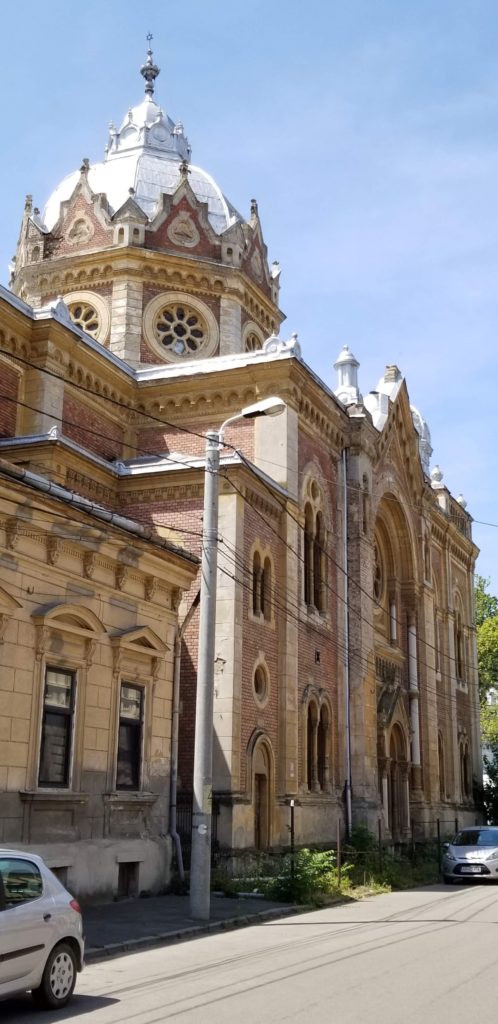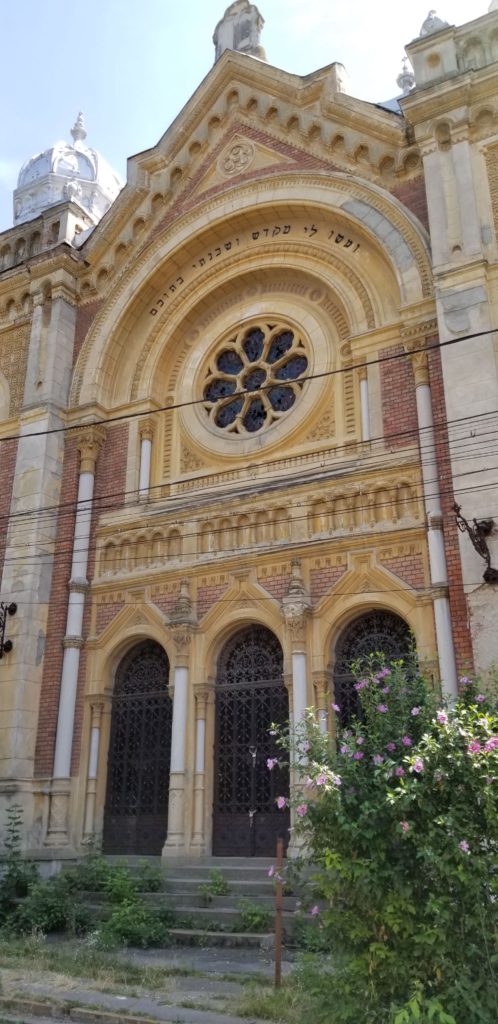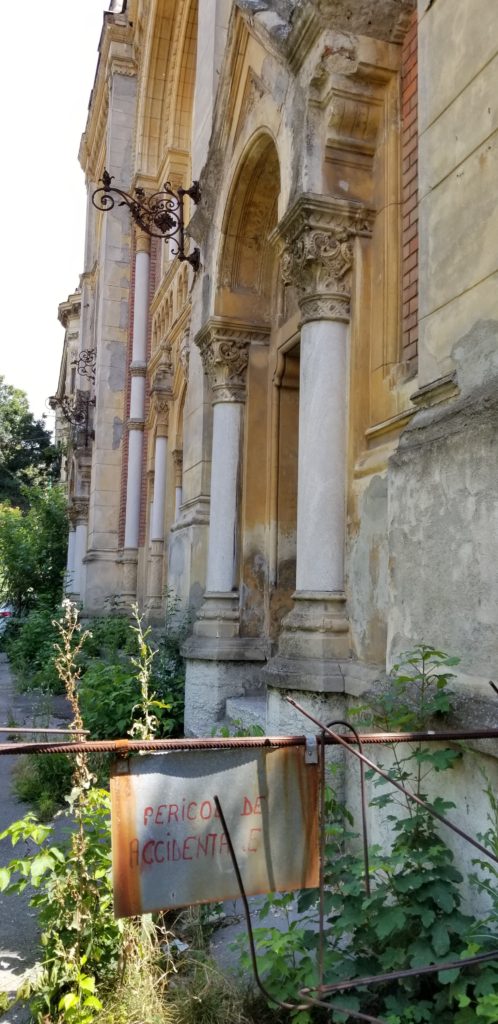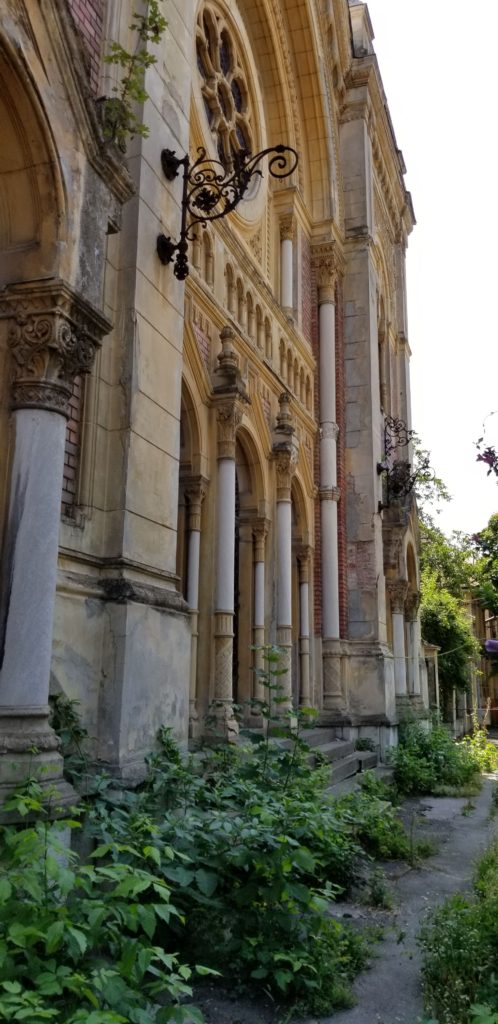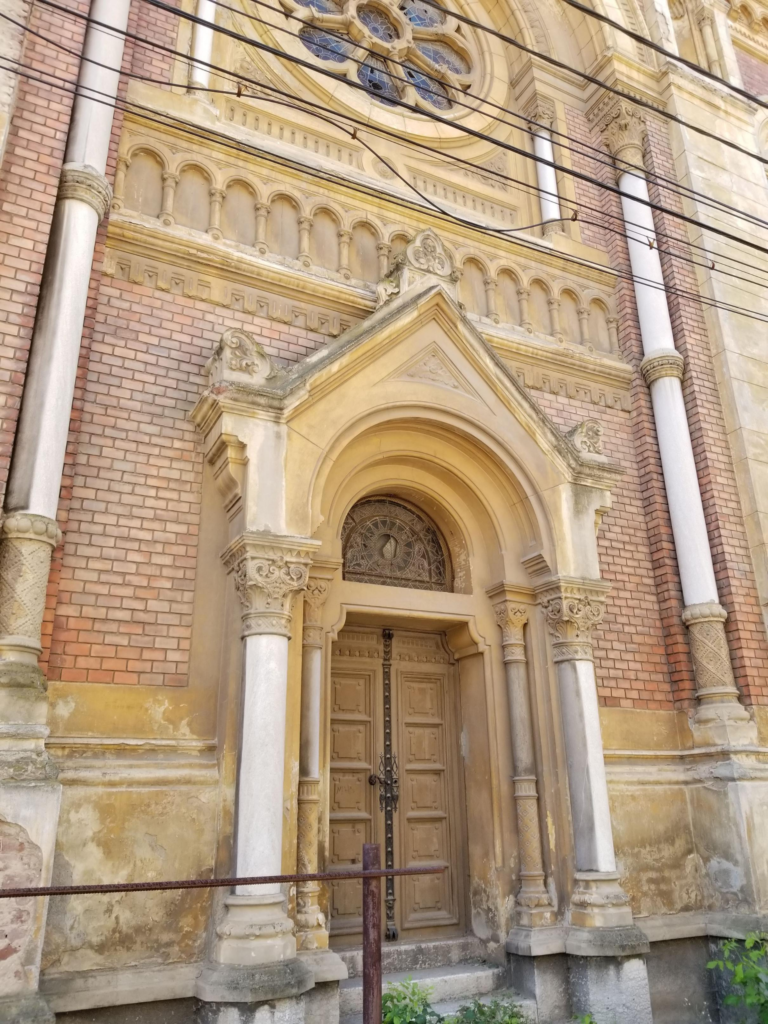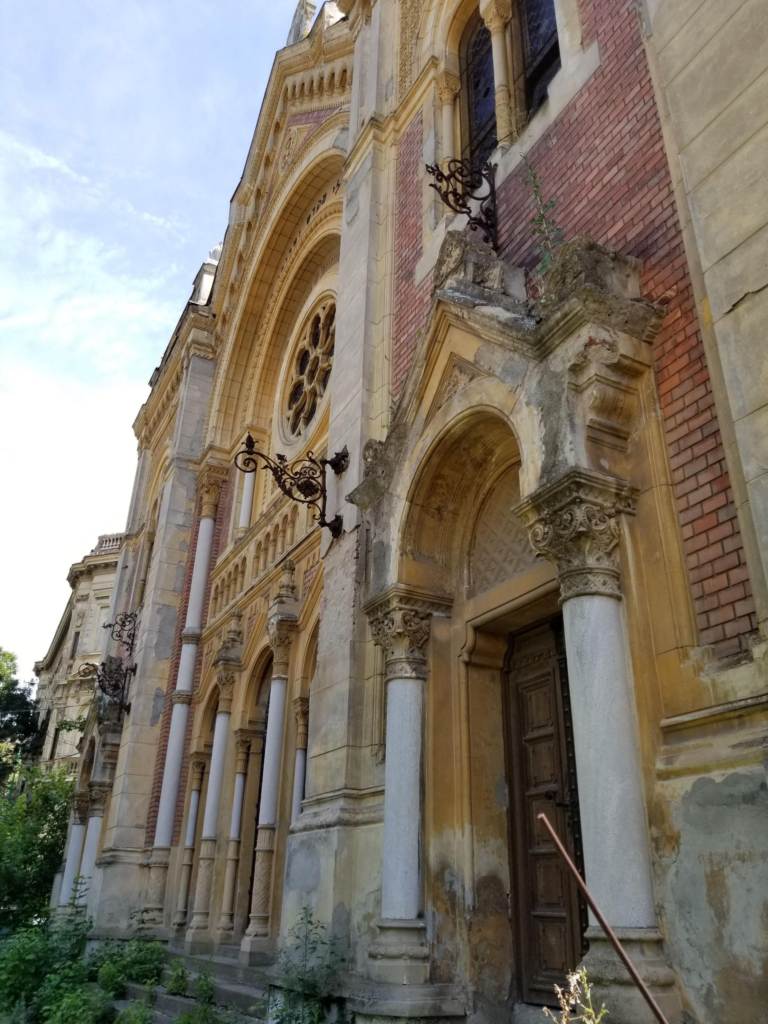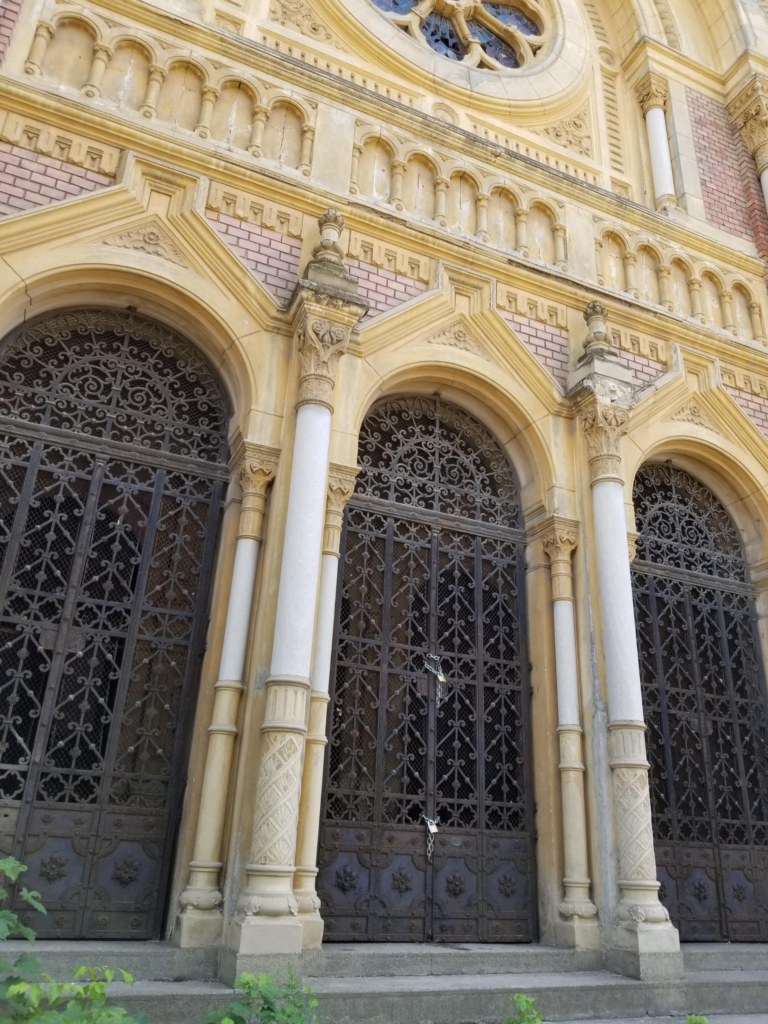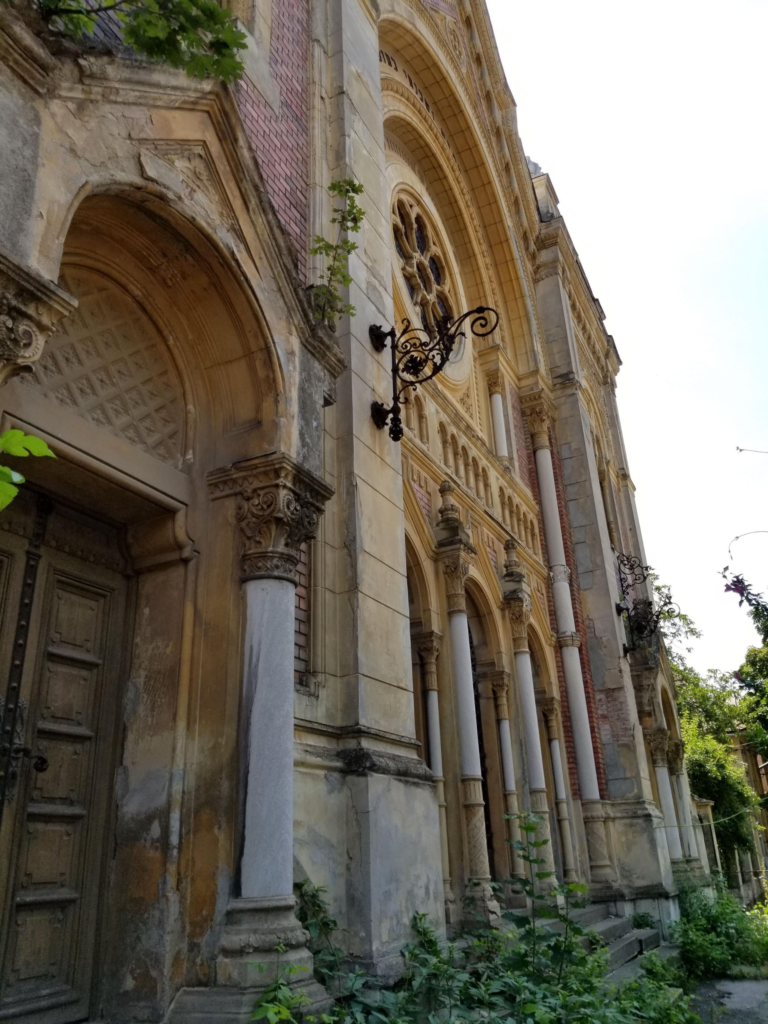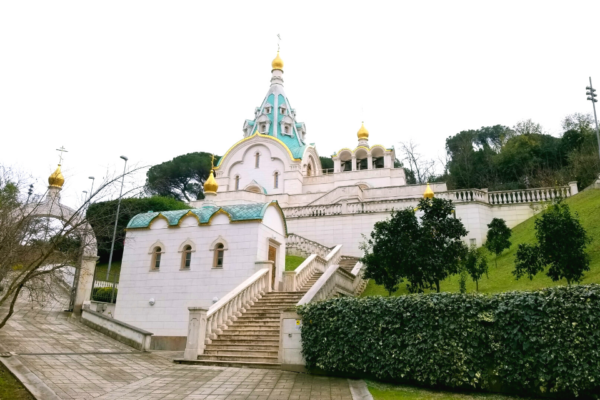Some of my best travel experiences have been places I went to on a whim. Romania was never on my radar but Timișoara was a convenient bus ride from Belgrade so why not.
Turns out, Timișoara, Romania is an absolute gem. Stunning architecture, flowery greenspaces, friendly people, a great mall – I stayed a long time and was sad to leave.
Wherever I travel, I like to check out synagogues and Jewish historical sites. I looked at the map of Timișoara and saw a synagogue on the outskirts of the city and decided to check it out. It’s called Fabric Synagogue and I didn’t realize until I got there that it’s abandoned. And decayed. And incredibly beautiful.
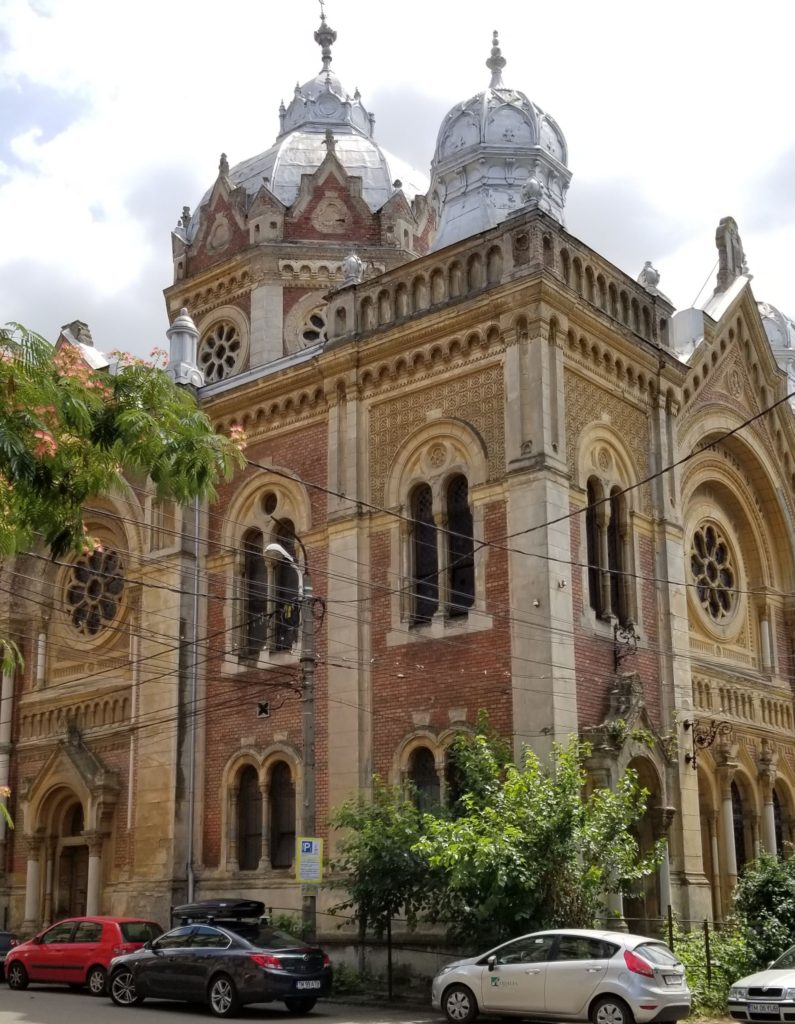
Fabric Synagogue was built 1897, when Timișoara was part of the Austro-Hungarian empire. It was designed by well-known Hungarian architect, Lipot Baumhorn, who designed many beautiful synagogues around Romania and Hungary.
Funds for the synagogue were donated by the local Jewish community and construction was supervised by local contractor Josef Kremmer. Romania’s most-talented organ-maker, Leopold Wegenstein, built the organ and local artists created the colourful stained-glass windows.
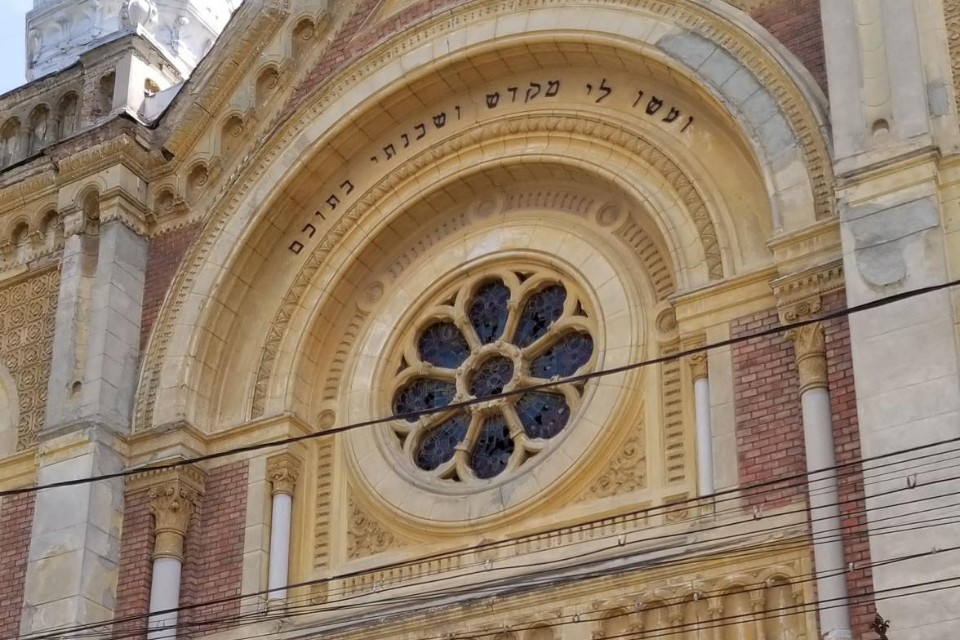
Around the time Fabric Synagogue was built, the Jewish population in Timișoara was growing. It reached its peak of about 13,000 people during the interwar period.
Something I didn’t realize, until I started travelling, is that after WWII, most Eastern European countries we under communist rule for the next 40 or 50 years. The anti-religious environment of this communist post-war time prompted the vast majority of Timișoara’s Jews to emigrate to Israel. By 1985, the Jewish population dwindled so low that Fabric Synagogue was closed.
Since then, it has been vandalized and ransacked several times, and stands in a state of decay so severe that entering is a hazard, as the roof may collapse at any time. Thus, all my photos are from the exterior, which itself took my breath away.
The architectural style is Neo-Moorish and despite it’s decay, Fabric Synagogue is designated as a Romanian National Monument. The building is known to have good acoustics and in recent years arrangements were made to turn it into a theatre. However, government corruption and mysterious misplacement of funds have resulted in the synagogue staying just as it is. Timișoara, along with Novi Sad (Serbia) and Eleusis (Greece), has been designated a European Capital of Culture for 2021. Perhaps it will be fixed up by then.
A couple blocks from Fabric Synagogue you will find the only stolperstein in Timișoara. “Stolperstein” is German for “stumbling stone”. They are bronze paving stones placed in the sidewalks in front of homes or businesses of Jewish people who were deported to WWII concentration camps and died there. Each stolperstein is engraved with the name of the person, their date of birth, location of deportation, and date of death.
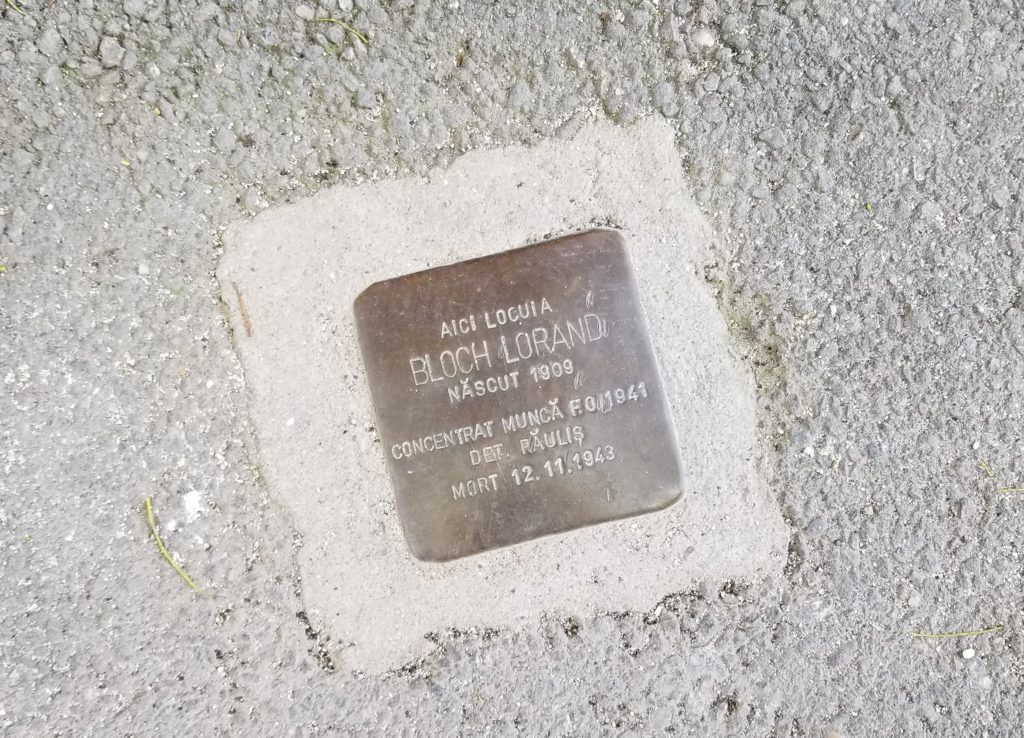
This one says “Here lived Lorand Bloch, born 1909 in Născut, deported to concentration camp in 1941, died 1943”. Almost all stolpersteine are laid by the German artist himself, Gunter Demnig. You will find them all over Europe, though the most are in Germany.
Fabric Synagogue is one of three synagogues in Timișoara, along with Cetate Synagogue and Iosefin Synagogue. All three were built within a few years of each other, but apparently Iosefin is the only one still in operation. Which was interesting to me to read, because the hostel I stayed in was next door to Cetate Synagogue and on Friday night and Saturday morning, I heard voices in Hebrew, chanting the Shabbat liturgy.

